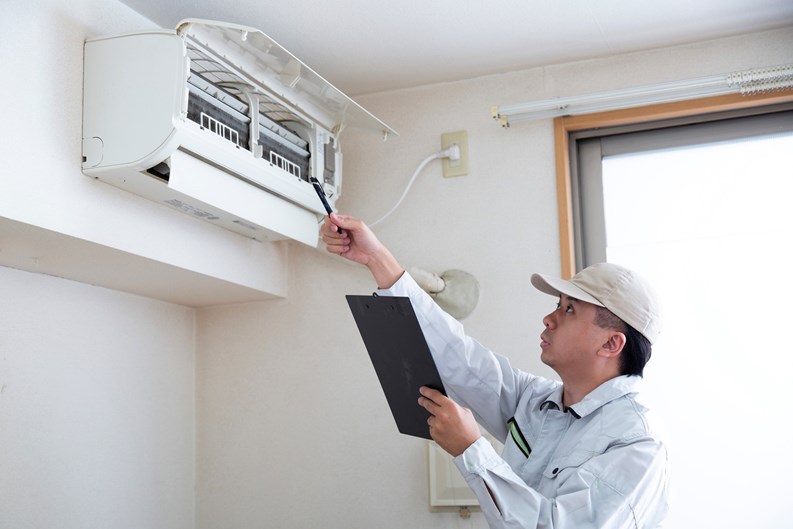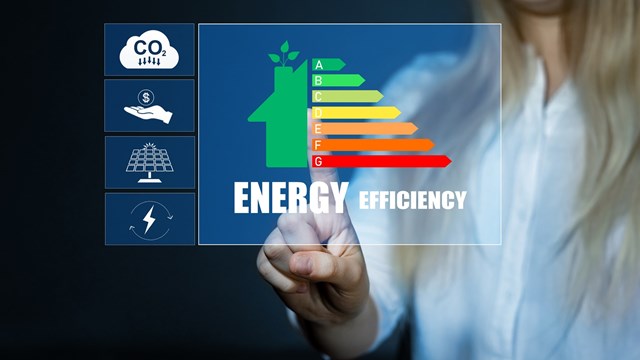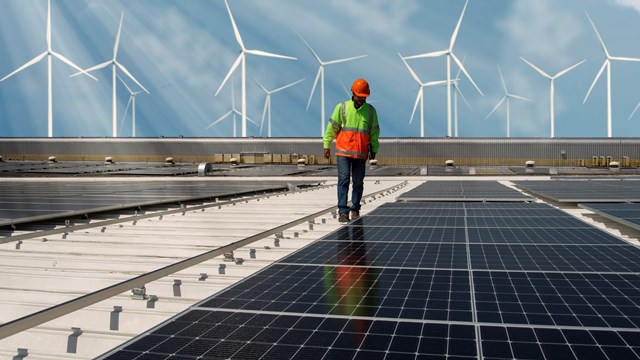Energy efficiency and reducing emissions has become a hot topic (no pun intended) in recent years across New England, with more and more gadgets and devices coming on the market specifically designed to use less energy and save money. Saving energy does a lot more than just reduce your building’s carbon footprint and toxic emissions—and everybody likes the saving money part.
The steps a multifamily condo, HOA, or co-op can take to reduce its energy consumption and save money range from the very simple to the very complex. We’ve asked energy experts to offer their top 10 tips for conserving both. Remember, the list is just a start—there are many ways in which you can go greener, but following some of these ideas is a great beginning.
Check Your Current System
Condo associations and HOAs come in many shapes and sizes, just like people. Knowing what type of HVAC equipment is in use on your particular property is crucial to optimizing its performance and maximizing its useful life.
“There are high rises, low rises, townhouses and stand-alone buildings,” says Jack Carr, retired senior vice president of engineering for Criterium Engineers in Portland, Maine. “Some have more sophisticated equipment, and some don’t. If you have an 80-year-old, four-story apartment building in Cambridge that has a steam boiler in the basement and has all radiators upstairs they’re going to have different heating issues than a modern townhouse complex that has brand new, high-efficiency units. You have to check what you have and go from there.”
Schedule an Energy Audit
With anything in life, it’s hard to know where you’re going when you don’t know where you’ve been—and a building is no different. An energy audit is a comprehensive analysis of a building’s systems and energy performance, carried out by a certified energy auditor. One of the laws of thermodynamics is that heat always moves from hot to cold, so buildings lose heat. An energy audit will figure out how much, adds Carr, and provide an overview of how much energy your building is saving versus losing. As a result, you’ll see what changes you may need to make.
“Energy audits are useful, but you must decide if you are going to audit the entire complex or individual units,” says Carr. “One of the things in managing the façade and the envelope of the building is to minimize air infiltration, and one of the ways you do that is in an energy audit. They’ll do a blow test. How they do that is they put a fan in the door of the unit and create a pressure situation, trying to draw air out of the building and seeing where it comes from and looking for those areas that allow air to pass through the skin of the building.”
Increase Your Insulation
Insulating your home will not only help reduce your heating and cooling costs, making it more energy efficient, but it will also make your home more comfortable. Experts advise that you shouldn’t wait until the big freeze to insulate.
“Insulation is a big issue in New England,” says Carr. “It’s one of the first things you want to take a look at to make sure you have enough. Typically in New England you’re talking about a minimum of 12 inches of insulation in your attic ceiling, attic roof or attic floor, but 18 inches is better. Ideally you’d like to have R-40 insulation, but that’s for newer buildings. Heat goes up, just like a chimney, so if a budget is involved, I’d spend money on insulating the attic or roof first, followed by the walls. Walls lose very little heat.”
Better Appliances & Accessories
It’s simple: Upgrade appliances and other accessories to ones that are more energy efficient, and you’ll conserve energy. When you’re choosing new appliances, look for the EnergyStar certification and the EnergyGuide label. The EnergyStar label was established to reduce greenhouse gas emissions and other pollutants caused by the inefficient use of energy and to make it easy for consumers to identify and purchase energy-efficient products. The certification means that the appliance has met standards that make it an energy-efficient unit that uses less energy and water than the older models.
“Installing EnergyStar lighting and appliances is one of the simplest, quickest ways to conserve energy,” says Caitriona Cooke, former director of the Building Performance Group, CLEAResult (formerly Conservation Services Group) in Westborough, Massachusetts.
Unplug Appliances
Once you’ve upgraded your appliances…unplug them! Unplugging appliances when you are not using them is as easy as pie, but very few people do it, says Tom Rooney, Vice President at TRC Companies, Inc., an energy consulting firm based in Concord, New Hampshire.
“The biggest thing right now is cable boxes and other electronic devices that are on continuously. So if you go away, just unplug them. Unplug anything that’s plugged in with a clock on it. That alone would save so much energy,” he says. “Individuals can buy surge protectors with an occupancy sensor, just like you’d have on a light switch. So you can have a desk light or a computer that is set up and if you leave for more than an hour, it automatically shuts off.”
Also, don’t forget to close windows and blinds on hot days, and cool off your unit at night by running ceiling fans, Cooke adds. Also check plumbing penetrations in kitchen and baths and seal any gaps.
If an equipment change to energy-efficient appliances proves too costly, Rooney recommends buying a set-back programmable thermostat. A programmable thermostat is designed to adjust the temperature according to a series of programmed settings that take effect at different times of the day.
“If you program your thermostat in the winter to go back five degrees when you are not home and program it to go up five degrees in the summer, you’ll notice a difference in your electric bill,” says Rooney. “In the summer you can program your thermostat so your home will be cool when you get home.”
Upgrade Windows
If your windows are more than 15 years old, your home could get drafty in the winter in a hurry. Replacement home windows have become more energy efficient in recent years, says Carr. “Condominiums are always replacing windows every 20 to 30 years. So when windows are replaced, care should be made,” he says. “Windows should have a low E-value (meaning low thermal emissivity) and a thermal pane. Never put in a single-pane window. Windows are usually paid for by the unit owner and not the condo board when they are replaced. Condominium associations and their bylaws will often insist that they have control over what types of windows are put in for two reasons: to get uniformity in the window appearance, and you’ll usually get a better price if they are bought in bulk.”
Let There Be LED
A relatively easy energy adjustment with a big impact is swapping out incandescent and compact fluorescent light (CFL) bulbs with light-emitting diodes, or LEDs. According to conservation pros, both the cost and versatility of LED lighting have vastly improved over the years. They now offer a variety of lighting “moods,” including “warm,” “cold,” and “daylight,” as well as different applications like strip lighting and even color-changing options. Because LEDs are about 75% more energy-efficient than incandescent bulbs and emit one-tenth of the heat of CFLs, replacement can reduce costs while limiting greenhouse gas (GHG) emissions, all while providing a more comfortable and flexible lighting solution.
“Cost savings [with a switch to LEDs] can be substantial, both in the electric bills and in the replacement costs,” says Tim Schaake, Sales Engineer for Connecticut-based USA LED Lighting Solutions and founder and CEO of solar consulting company TSHOCKZ LLC. “LEDs use only a fraction of the energy of an incandescent or even a CFL,” he notes, “and will last 25% longer, without the wasted heat of either an incandescent or a CFL.”
Some cities and states already have a sense of the impacts and quality that LED lighting provides, since the passing of laws in the early 2000s mandating energy-efficient lighting in both government and private sector buildings. While individual dwellings are generally exempt from state and municipal LED requirements, multifamily residents will still feel the effects that upgraded common area lighting have, both on their environment and on their wallet. “When you talk about common spaces that must be lit continuously, and that take time and manpower to constantly change bulbs, that somewhat minor change can amount to major savings for a co-op or condo,” Schaake continues. Buildings can also take advantage of government-sponsored incentive programs based on the amount of energy reduction they’re able to achieve, as well as upgrade incentives for multifamily buildings offered by utility providers.
Adjust Lighting Controls
Carr also believes that lighting is an area where most homeowner associations can make relatively low-effort changes, noting that inefficient lighting can consume up to 15% of a building’s energy needs or more, while energy-efficient lighting can reduce consumption by 50% or more. In addition to converting to LEDs, he recommends that management install lighting controls, vacancy sensors and timers that will help to turn off lights that aren’t needed. These can be installed in fitness centers, restrooms, electric rooms, laundry rooms, trash collection rooms and all common areas.
“There’s multiple ways this can be done,” says Carr. “Sometimes the control is based on motion, or it can be based on natural lighting. Sometimes there can be enough light so that it will actually turn the lights off.”
Take Advantage of Incentives
If you want to install EnergyStar appliances and other energy-saving accessories, such as low-flow shower heads, it’s possible to earn money back if you know how. A good place to start, says Cooke, is to contact your local utility or energy services provider to find out about any incentive programs your community may be eligible for. “Many offer generous rebates for energy efficiency measures and equipment upgrades,” she says.
Conduct a Combustion Safety Test
Water heaters and furnaces are critical components for regulating temperature in a home - but if they’re not operating properly, they can use energy inefficiently. Worse than that, they can emit fumes like carbon monoxide that are toxic and difficult to detect—so Cooke recommends having a combustion safety test conducted prior to heating season to make sure your equipment is running both safely and efficiently. Doing this before firing up the boilers will help prevent service disruptions and other issues when the temperatures drop.
Everyone wants to save money—and many of us are committed to doing our bit to reduce our own carbon footprint, and that of our community. While it would be amazing to get every condo, HOA, or co-op to adopt every one of these measures, getting your building or association to adopt a few can help both your bottom line and the environment we all depend on for life itself.










Leave a Comment